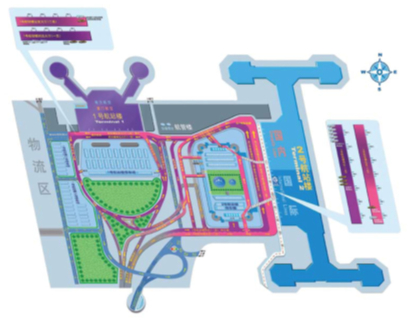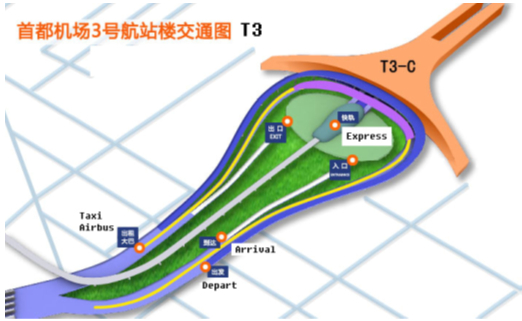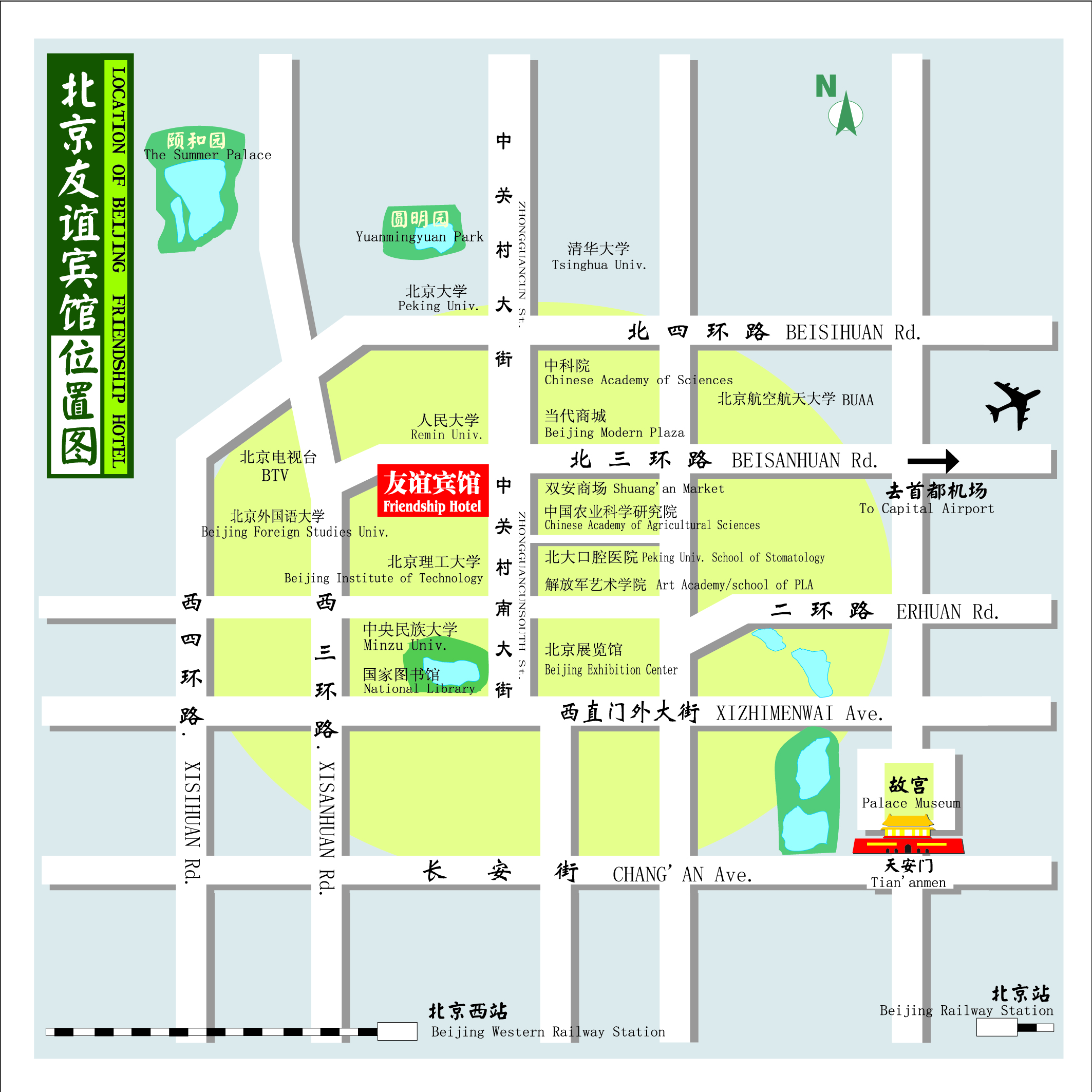|
Beijing
Beijing, which was founded 3000 years ago, is the capital of the People's Republic of China (PRC). It is also the nation's political and cultural hub. Additionally, it is the focal point for the country's transportation, scientific and technological development, education and communication. Its present-day population is over eleven million, thus, it is the second largest city in China. Previously known in English as Peking, the name was changed when the system for spelling Chinese words in English changed; the name in English means "northern capital". Beijing is one of the Great Ancient Capitals of China and has hosted the seat of government for much of China's history. It is the political, economic, academic, and cultural center of the country. Tradition and modern civilization are well integrated in this beautiful city.
The long history of Beijing endows the city with a rich cultural heritage. The Great Wall, one of the world's great wonders and one of the very few man-made structures that can be seen from space, extends several thousand miles, and passes relatively near to Beijing. The Forbidden City includes the most splendid group of imperial palaces in the world. The temple of heaven is the place of worship for emperors of various dynasties of China as well as a splendid representation of ancient Chinese architectural art. These sites have been selected by the United Nations Educational, Scientific and Cultural Organization as representing the world cultural heritage. Hutong (Chinese alleys) and compound courtyards (old Beijing residential quarters) are found throughout Beijing. These streets and buildings have witnessed the ups and downs of the city and the people in past centuries and are symbolic of the life of Beijing people. Few cities have the unique historical charm of Beijing. Its wide thoroughfares, magnificent gate tower and memorial arch, and grand palaces all speak to the extensive history of this city. It also stands as a symbol of China's grandeur, history, culture and mystery. Beijing is also an approachable and visitor-friendly city.
Changes have been taking place day-by-day in Beijing since China's reform and opening to the outside world. As summarized in a popular saying, Beijing is growing taller with more and more skyscrapers while growing younger with the improving living standards and more diversified life style. This is Beijing, old and young, full of attractions. It is our sincere wish that you will make the best of your time here and we believe you will bring home more than what you expect.
Attractions
lGreat Wall
A Chinese saying goes that He who has never been to the Great Wall is not a true man. If we laid the bricks and rocks used in the Great Wall of Ming to form a wall one meter (1.1 yard) wide and five meters (16.4 feet) high, it could circle the earth at the equator with great ease. It is such a spectacular and formidable architectural feat that anyone who comes to China should not miss it under any circumstances. The Badaling Great Wall, constructed in 1502 (during the Ming Dynasty), once served as a crucial military fortification, and is now the most impressive and representative section of the striking Great Wall. It is about 70 kilometers (43.4 miles) from the downtown area of Beijing. As Badaling was once an important military strategy point, here the wall is comparatively high and firm. It has a length of 3,741 meters (2.3 miles) and it is equipped with dense watchtowers. The wall is about 8.5 meters (27.9 feet) high and slopes inward as it rises in height. The wall is 6.5 meters (21.3 feet) wide at its base, and its rim spans about 5.7 meters (18.7 feet) across.
lTiananmen Square
Tiananmen Square is the geographical center of Beijing City. It is the largest city square in the world, occupying an area of 440,000 square meters (about 109 acres), and able to accommodate 10,000,000 people at one time. In the center of the Square stands the Monument to the People's Heroes, which commemorates the martyrs who devoted their lives to the Chinese people. It reaches 37.94 meters (124 feet) which makes it the biggest monument in Chinese history. The body is made of hardy granite and is surrounded by white balusters. Tiananmen Tower in the south was built in 1417 during the Ming Dynasty (1368-1644). During this dynasty and the following Qing Dynasty (1644-1911) it was where proclamations were issued to the whole nation. The common people were prohibited from entering the tower, but now tourists with tickets are permitted to climb it. It has five arched gates and nine principle hall columns. With the delicately carved white marbles on its base and yellow tiles on the roof, the tower is quite resplendent. Under the tower flows the limpid Jinshui River, across which seven exquisite bridges are perched, named the Golden Water Bridges.
lBeijing Lama Temple
Beijing Lama Temple is one of the largest and most important Buddhist Tibetan monasteries in the world. Construction and works in the church to unite the Han Chinese and Tibetan styles. This story is as follows. Construction work at the Yong He Gong Lama Temple began in 1694 during the Qing Dynasty. Initially, he served as official residence for court eunuchs. It was then converted to a court Prince Yong (Yin Zhen), son of Emperor Kangxi and Emperor Yongzheng himself a future. After Yongzheng ascension to the throne in 1722, half of the building was converted into a monastery, a monastery for monks of Tibetan Buddhism. The other half was left of the Imperial Palace. After Yongzheng’s death in 1735, his coffin was placed in the temple. Emperor Qianlong, Yongzheng’s successor, gave the temple imperial status is indicated with its turquoise tiles replaced by yellow tiles, which were reserved for the emperor. Subsequently, the monastery became a residence for large numbers of Tibetan Buddhist monks from Mongolia and Tibet, and so Yonghe Monastery has become a national center of Lama administration. The temple is said to have survived the Cultural Revolution because of the intervention of Prime Minister Zhou Enlai. It was opened to the public in 1981.
lSummer Palace
The Summer Palace, Yiheyuan in Chinese, is the most celebrated imperial garden in China. The garden came into existence early in the 1750s and had once been a summer resort for the emperors. It is acclaimed as a museum of gardens in China, for a visit to this garden bestow on sightseers a glimpse of representative scenes all over China.
Weather
Beijing lies in the continental monsoon region in the warm temperature zone and its climate represents as hot and rainy in summer and cold and dry in winter. The four seasons in Beijing are distinct. It is dry, windy and sandy in spring and hot and rainy in summer. August and September are the end of summer and the beginning of autumn in Beijing. This is the best season of the year when the sky is blue and clear; the air is crisp, mild and humid.Beijing features a four season, monsoon-influenced climate, typical of East Asia, with cold, windy, very dry winters reflecting the influence of the vast Siberian anticyclone, and hot, humid summers, due to the monsoon.
|
Month
|
JAN
|
FEB
|
MAR
|
APR
|
MAY
|
JUN
|
JUL
|
AUG
|
SEP
|
OCT
|
NOV
|
DEC
|
|
°F |
25 |
30
|
43
|
57 |
68 |
75
|
79 |
77 |
68
|
55
|
41 |
28
|
|
°C |
-4
|
-1 |
6 |
14 |
20 |
24 |
26 |
25 |
20 |
13 |
5 |
2 |
Transportation
All the registrants should make their own local transportation in the city. Travel by taxi is the most convenient and fastest option for the journey. Beijing is not only famous for charming natural scenery but also for large numbers of taxis and the cheapest taxis cost: RMB2.00 per km with base price RMB13.00! Please prepare some changes in advance for taxi fee or city bus cost in the staying in Beijing.
It takes about 40 minutes by taxi from the Beijing Capital Airport to Beijing Friendship Hotel, the taxi fare is about RMB 120 (approx. US$20), tollgate fee is RMB10. Whenever you arrive at the airport, there are always many taxis waiting at the airport to pick up passengers. We suggest you wait for taxi at the airport designated taxi station (Exit No. 7). Please ask for a receipt with the taxi.
PS: Traffic information about the Beijing Capital International Airport (北京首都国际机场) and Beijing Friendship Hotle (北京友谊宾馆) can refer Appendix.
Transportations from/to Airport
• From/to Beijing Capital International Airport (北京首都国际机场) to/From Beijing Friendship Hotel (北京友谊宾馆)
Route 1: You will take the Subway Line 4 from/to Beijing Capital International Airport (北京首都国际机场) to/from RenMin University station (人民大学站) and you take the Exit D. Between Exit D of RenMin University station (人民大学站) and Beijing Friendship Hotel (北京友谊宾馆), you can walk to Beijing Friendship Hotel (北京友谊宾馆).
Route 2: You will take taxi. The distance is about 33 km and you need to pay about 120 RMB.
Route 3: You will take Shuttle Bus Line 4 from/to Captial International Airport (北京首都国际机场) to to/from Beijing Friendship Hotel station (友谊宾馆站). The fee is about RMB16.
• From/to Tian An Men Square (天安门广场) to/From Beijing Friendship Hotel (北京友谊宾馆)
Route 4: You take Subway Line 1 at Tian Tian An Men to Xi dan station (西单站) and change the Subway line 4 to the RenMin University station (人民大学站). You take the Exit D. Between Exit D of RenMin University station (人民大学站) and Beijing Friendship Hotel (北京友谊宾馆), you can walk to Beijing Friendship Hotel (北京友谊宾馆).
• From/to Wang Fu Jing (王府井) to/From Beijing Friendship Hotel (北京友谊宾馆)
Route 5: You take Subway Line 1 at Wang Fu Jing (王府井) to Xi dan station (西单站) and change the Subway line 4 to the RenMin University station (人民大学站). You take the Exit D. Between Exit D of RenMin University station (人民大学站) and Beijing Friendship Hotel (北京友谊宾馆), you can walk to Beijing Friendship Hotel (北京友谊宾馆).
• From/to Summer Palace (颐和园) to/From Beijing Friendship Hotel (北京友谊宾馆)
Route 6: You take Subway line 4 Bei Gong Men station at Summer Palace (颐和园) to RenMin University station (人民大学站). You take the Exit D. Between Exit D of RenMin University station (人民大学站) and Beijing Friendship Hotel (北京友谊宾馆), you can walk to Beijing Friendship Hotel (北京友谊宾馆).
Appendix: Capital international Airport Terminals
 Terminal 1 and Terminal 2 |
 Terminal 3 |
|
|
 Beijing Subway |
|
|
 The Hotel Surroundings Map |
|
|
Useful
Information
lLanguage:
Official language is Mandarin and most people also use their local dialect. The standard spoken Chinese is Putonghua. English can be understood by many young people and is used in hotels and big restaurants. In all tourist hotels, staff can speak in English, Japanese and other languages. They can also write down addresses or instructions in Chinese for taxi drivers or others. In addition, roads in major cities are signposted in Pinyin, the official Romanization system of the Chinese characters, which makes it quite easy to get around with the help of a map.
lCurrency:
Renminbi (RMB) is the only currency to be used in China. RMB is also called Chinese Yuan. The unit of Renminbi is yuan and with smaller denominations called jiao. The conversion among the two is : 1 yuan =10 jiao. Paper notes are issued in denominations Aof 1, 5, 10, 20, 50 and 100 yuan. Coins are issued in denominations of 1 yuan; 5 jiao; 1 jiao.
Money exchanges by cash or travel’s cheques can be made at the branches of Bank of China at Beijing Capital International Airport, hotels and tourist stores. Please remember to keep the receipt to exchange back to foreign currency when leaving China.
lCredit
Cards: Visa, Master Card and American Express are the most commonly used in China. Cards can be used in most middle to top-range hotels, department stores, but they cannot be used to finance your transportation costs.
lTime:
GMT + 8 hours (the whole of China is set to Beijing time)
lElectricity:
Electricity is 220 Volts, 50 AC; plugs can be three-pronged angled, three-pronged round, two flat pins or two narrow round pins.
lWater:
Bottled mineral water can easily be bought in all stores and street kiosks for RMB 3. And sometimes hotels provide it free of charge. Furthermore, potable water is only available in a few 4 to 5 star hotels, while water in thermos flasks in rooms is usually non-potable tap water.
lMeasurement:
In Metric system
lTipping:
Tipping is not customary outside of the foreign joint-venture hotels and is officially discouraged. But hotel bellboys usually expect RMB 2-5 per bag.
lAttention:
Smoking is prohibited in public places in Beijing, such as hospitals, office buildings, theatres, cinemas, museums, planes, and trains.
lHotlines:
110 - Police;119 – Fire;120 – Ambulance
Conference Information
Venues
IEEE ICMA 2015 will be held in the city of Beijing, at Beijing Friendship Hotel, Beijing, which serves as both the official conference hotel and the venue for the technical program. Being a 5 star hotel, it is situated in the center of the prosperous business district of Beijing within easy access to the subway station. The stylish design reflects the perfect blend of art and architecture, where you with always feel at home thanks to the ambience and charm of personalized 5 star hotel service, where the word over make it their choice to conduct business.
Chinese
Address
Cards
|
Beijing Friendship Hotel
北京友谊宾馆
地址:中国北京中关村南大街一号100873
Tel: 86-10 68498888
Fax: 86-10 68498866
|
Conference
Registration
A conference registration desk will be set up and opened at the Freiendship Palace (友谊宫) and Building 8 (嘉宾楼) of Friendship Hotel from August 2 (15:00) to August 5 (16:45) as followings.
August
2, 2015: 15:00 ~ 18:30 1F, Friendship Palace, Beijing Friendship
Hotel
August
3, 2015: 08:00 ~ 12:00 1F, Friendship Palace, Beijing Friendship Hotel
August
3, 2015: 12:00 ~ 18:30 1F, Building 8, Beijing Friendship Hotel
August 4, 2015: 08:30 ~ 16:45 1F, Building 8, Beijing Friendship Hotel
August 5, 2015: 08:30 ~ 16:45 1F, Building 8, Beijing Friendship Hotel
Special and
Social Events
The social events organized by the IEEE ICMA 2015 include the conference reception, the awards
banquet, the conference registration, the farewell party, etc.
Conference
Reception
The Conference Reception will be held from 17:30 to 18:30 on August
2, 2015 at Conference Room 3, 2F, Friendship Palace, Beijing Friendship Hotel. All the conference participants are welcome to join this event.
Tutorials & Workshops
The Tutorials & Workshops will be held from 13:30 to 17:30 on August
2, 2015 at Conference Room 4, 2F, Friendship Palace, Beijing Friendship Hotel. All the conference participants are welcome to join this event.
Awards
Banquet
The Awards Banquet will be
held from 18:30 to 21:00 on August 4, 2015 at Banquet Hall (Junying Ballroom), Friendship palace, Beijing Friendship Hotel. All the conference participants are welcome to join
this event.
Farewell
Party
The Farewell Party will be
held from
17:00 to 18:00 on August 5, 2015 in Meeting Room 5, Building 8, Beijing Friendship Hotel. All the conference participants are welcome to join this event.
Lunch Place
The IEEE ICMA 2015 Lunch will be held on from 11:30 to 13:30
on August 3, 4, 5 at Restaurant Dining Hall, 1F,Friendship Palace.
All the conference participants are welcome to join this event.
|